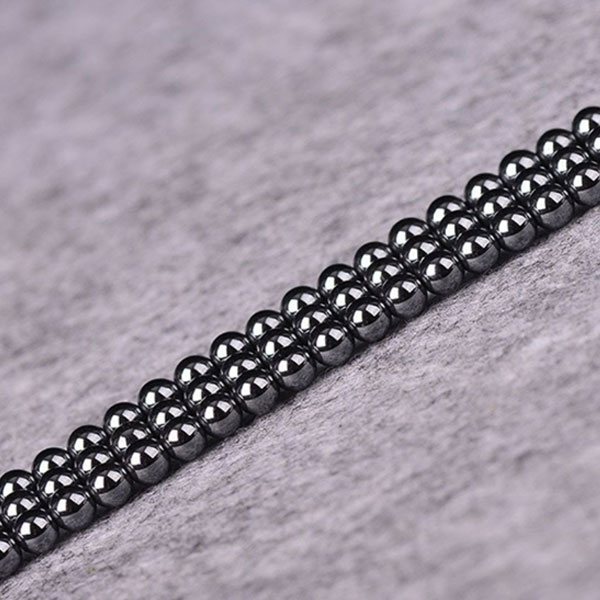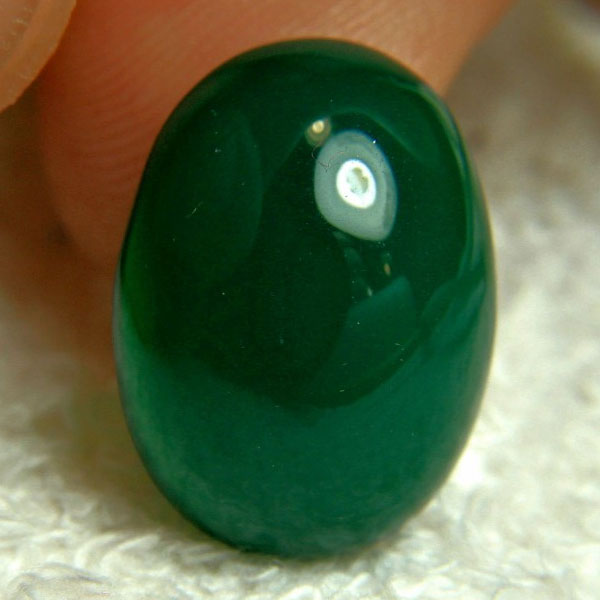Hematite Ball Strings
Total: $27.00 – $37.71
Lab Hematite
Earth-mined hematite is a common ore composed of iron and is widely available within rock matter. The rock forms as a relative to the lattice crystal system and is similar to corundum and ilmenite.
Hematite has a signature black appearance and is one of the hardest oxide minerals with a Mohs rating between 5.5 and 6.5. The mineral has a metallic luster that creates an instant appeal with an impressive refractive index between 2.8 and 3.22.
Many jewelers, artisans, and designers prefer hematite to make jewelry pieces, works of art, and other useful items. However, the demand for hematite largely outweighed its natural supply for many years – until lab-made variants became available.
Lab-grown hematite features exact properties of its natural variant, is readily available and artisans work it into different pieces with ease. But there’s much more you need to know about lab-grown hematite and what it offers.
That’s why this article provides vital information about synthetic hematite, its origins, uses, maintenance tips, and other essential details. You’ll find it easy to hold, display, and maintain lab-grown hematite pieces with all he information this article offers.
History of Lab-Grown Hematite
Hematite is derived from ‘haima’, a Greek term meaning blood. The stone has a red interior and bears a striking resemblance to blood in its streaks.
Scientific evidence suggest hematite may have been one of the earliest writing tools ever used by man over 160,000 years ago.
Several records also show that hematite was used in jewelry at several periods throughout the Victorian era.
How is Lab-Grown Hematite Made?
Natural hematite occurs in banded iron formations in still standing water or hot springs. The mineral precipitates and collects in layers at the bottom of lakes. Other forms of hematite also occur as a result of volcanic activity.
Lab-grown hematite forms when chemists recreate the precipitation process its natural variant adopts to form.
Uses of Lab-Grown Hematite
Hematite is useful as a loose gemstone for exhibition, a base material for sculpting, centerpieces on jewelry components, and much more. The mineral’s porous texture also makes it useful as an imitation of other gmstones, particularly turquoise.
Chemical Properties of Lab Hematite
- Formula: Fe2O3, α-Fe2O3
- Birefringence: 0.280
- Cleavage: None
- Crystal class: Hexagonal and scalenohedral
- Crystal habit: Tabular thick crystals; micaceous, usually in rosettes; radiates fibrous masses, columnar; granular
- Crystal system: Trigonal
- Density: 5.3
- Diaphaneity: Opaque
- Fracture: Uneven to sub-conchoidal
- Luster: Metallic and splendent
- Mohs scale hardness: 5.5 – 6.5
- Pleochroism: brownish red; yellowish red
- Refractive index: 2.870–2.940 (3.150–3.220 on some variants)
- Specific gravity: 5.26
- Streak: Bright red to dark red
- Typical colors: fine-grained material, steel-grey to black in crystals and massively crystalline ore variants
Maintenance Tips for Lab-Grown Hematite
You can maintain your lab-grown hematite with:
Cleaning and air drying
You can’t wash your lab-grown hematite in a liquid soap solution with concentrated ingredients. High-quality lab-grown hematite might disintegrate over time when it encounters chemical solutions regularly.
Clean your lab-grown hematite with a damp cloth and allow it to air-dry before storage or use. You can also dust your lab hematite with a brush or piece of clothing to remove dust and non-sticky dirt from its surface.
Proper storage
Hematite doesn’t do well under intense heat and might lose its appearance and signature after long exposure to heat. Protect your hematite crystals in a storage container whenever it isn’t in use.
Place your lab-grown hematite in an airtight cushioned box also protects it from humidity that may cause grime to form around its edges.













